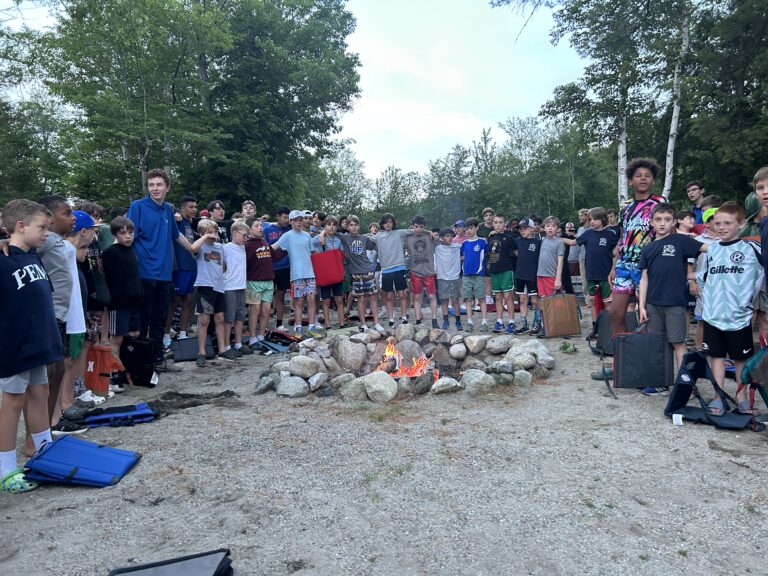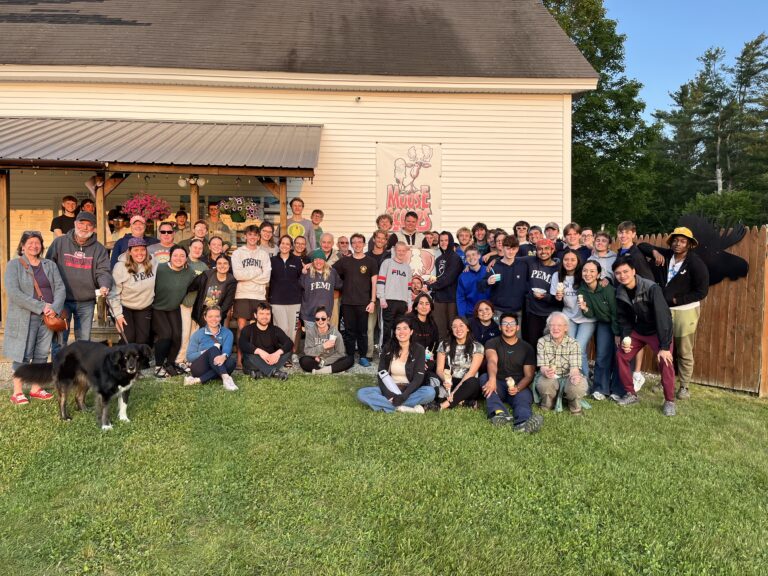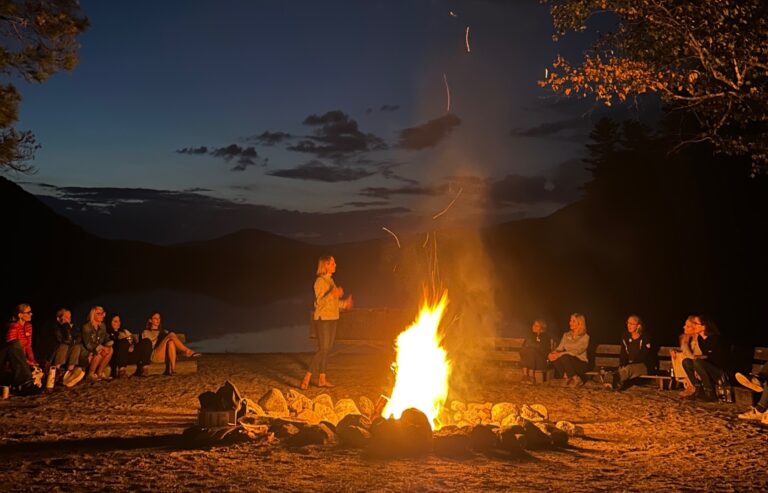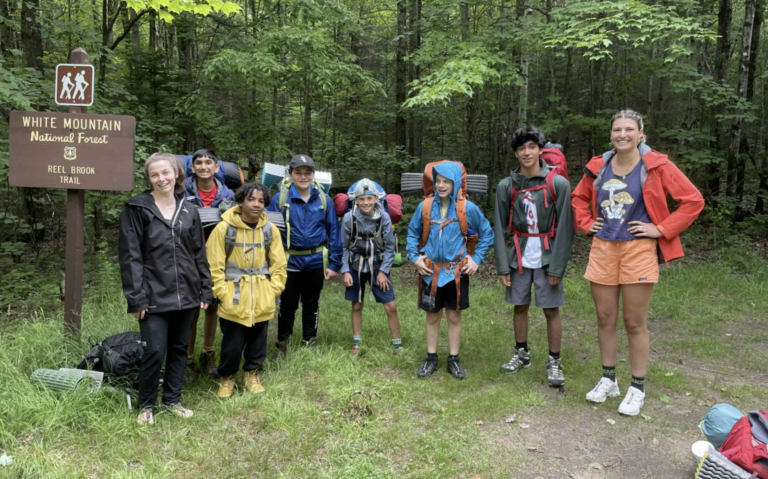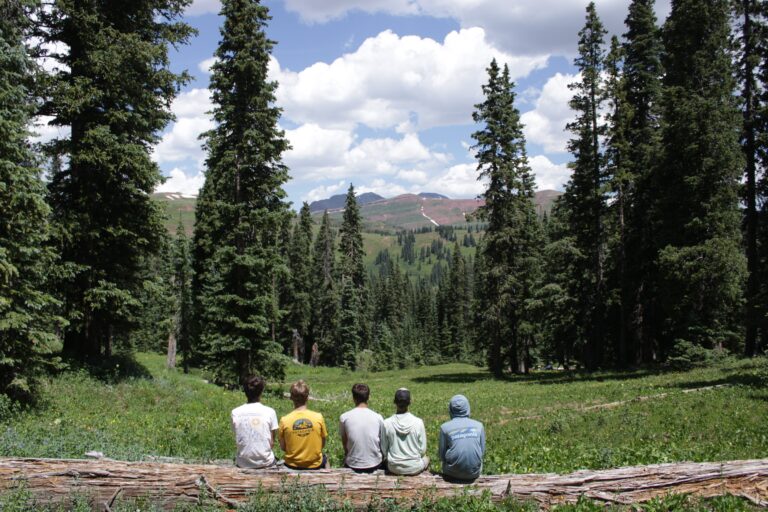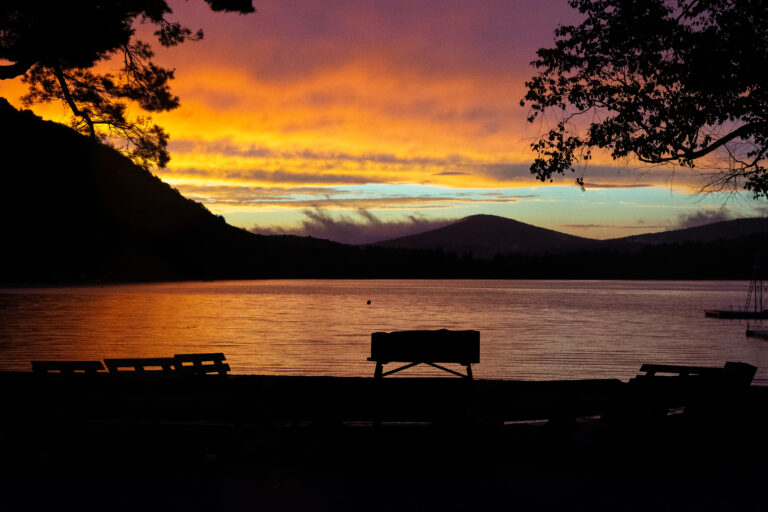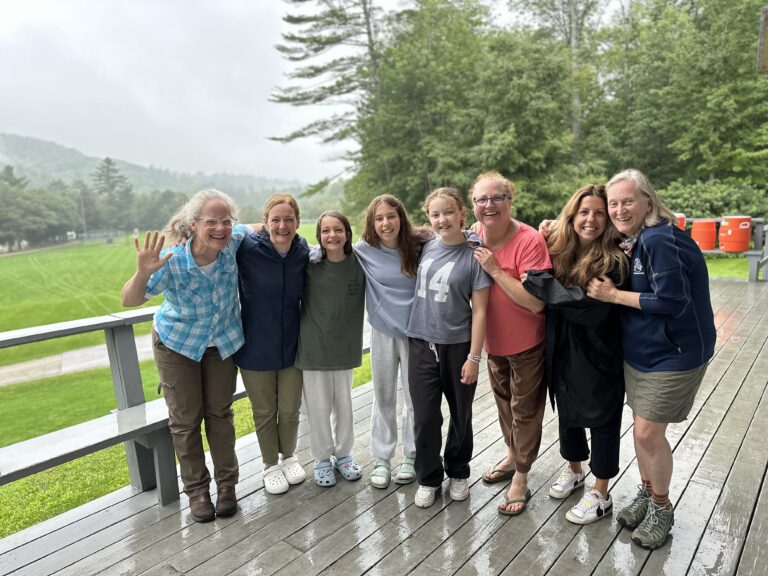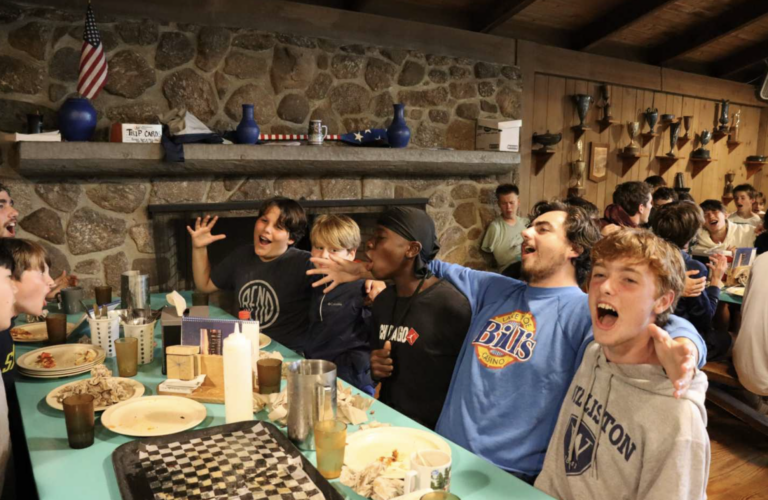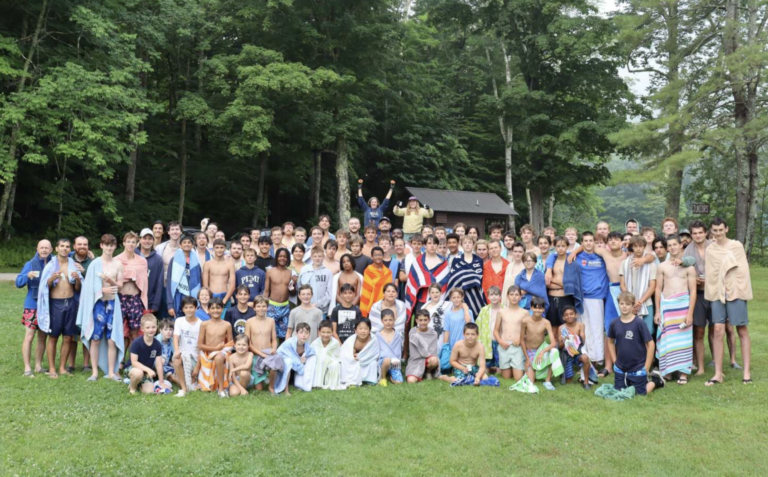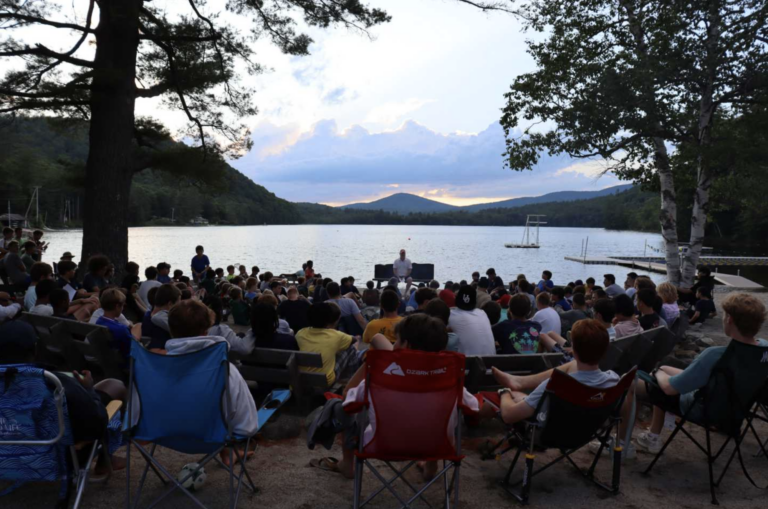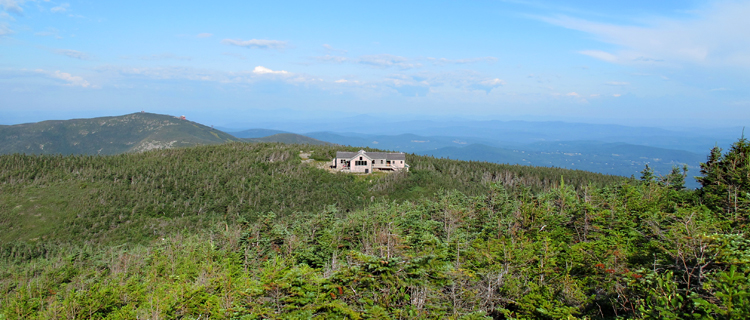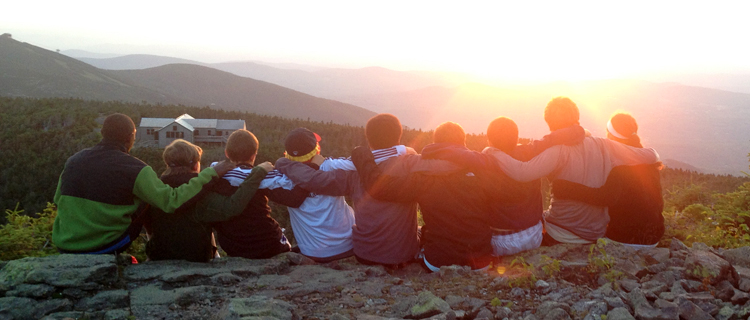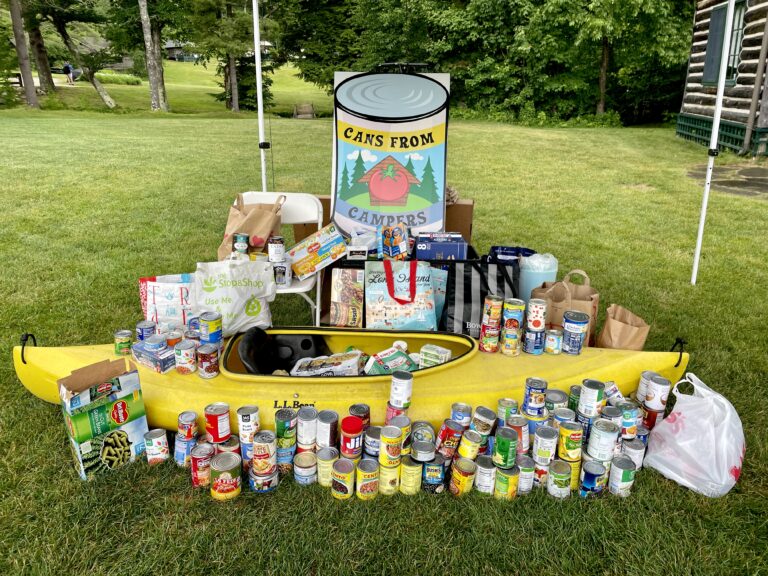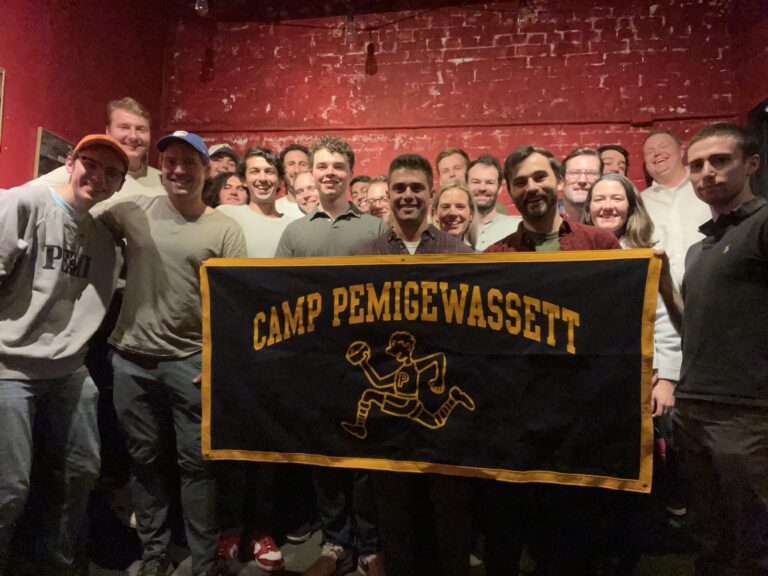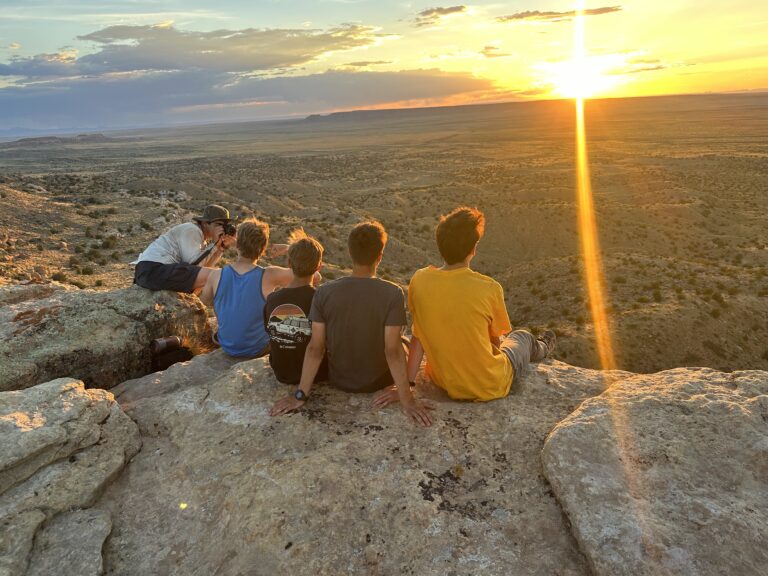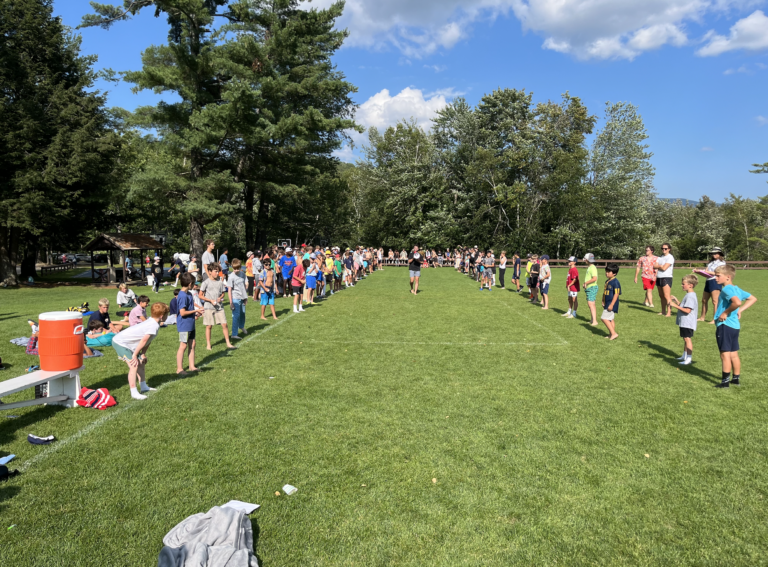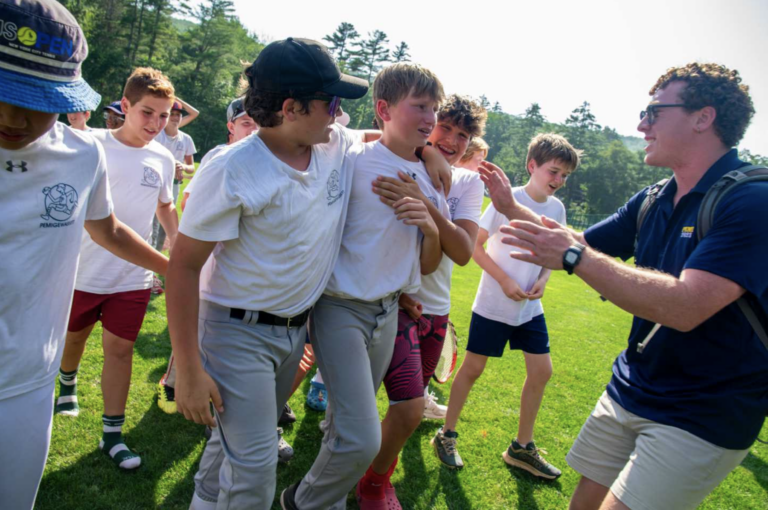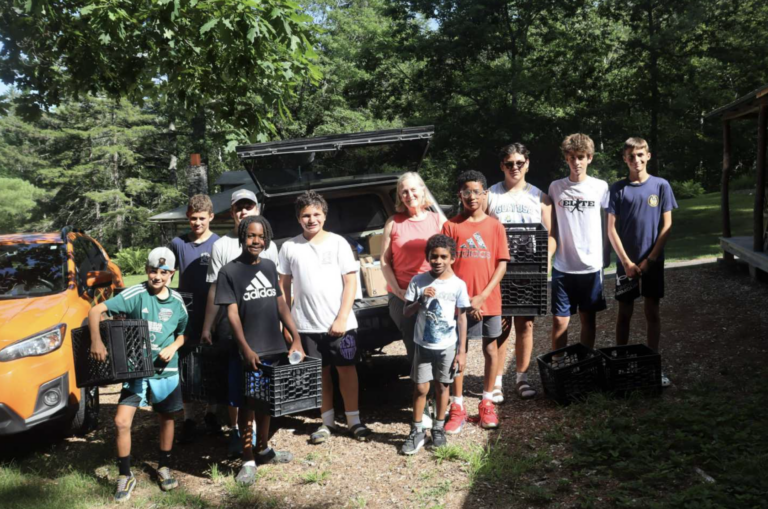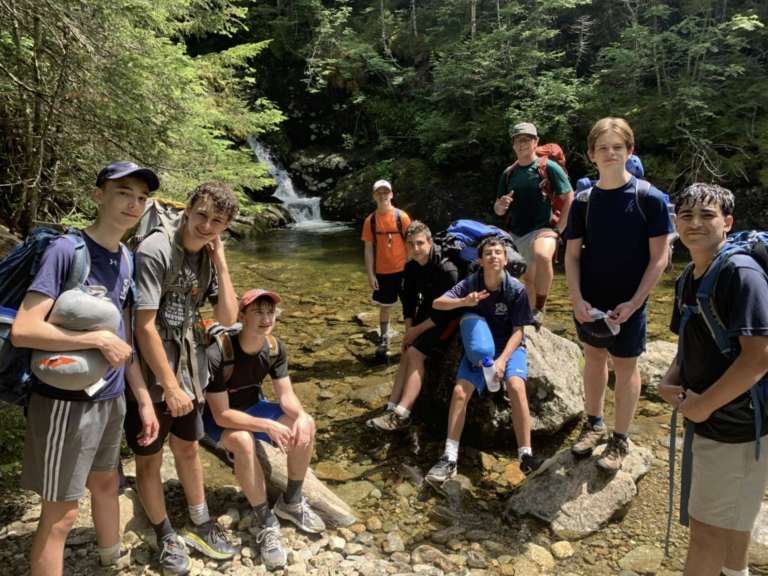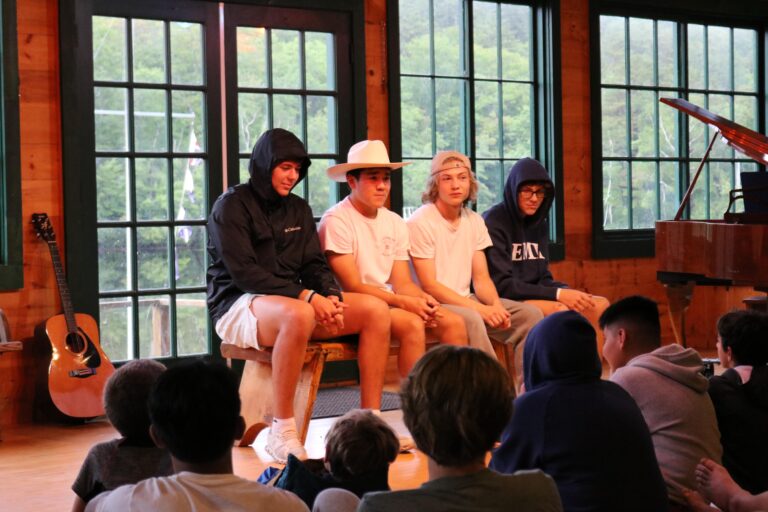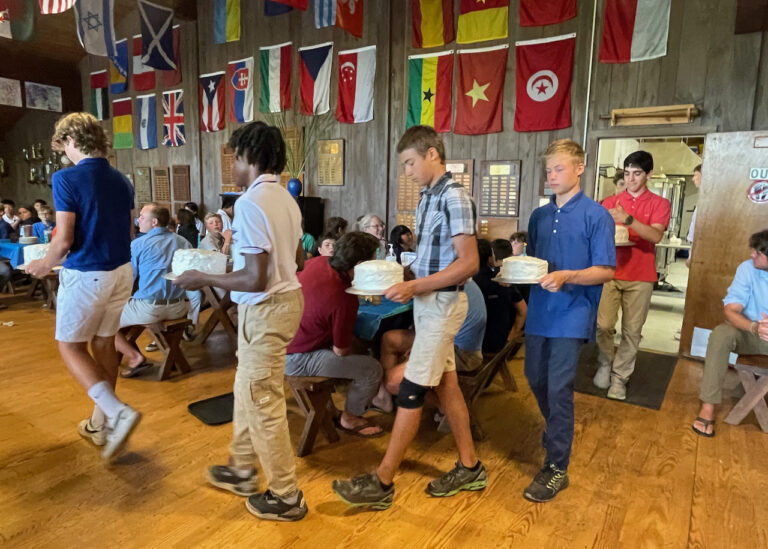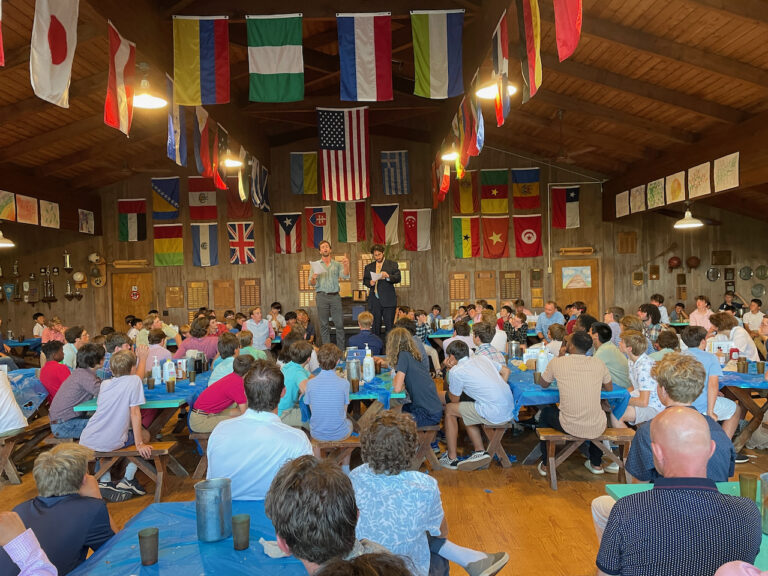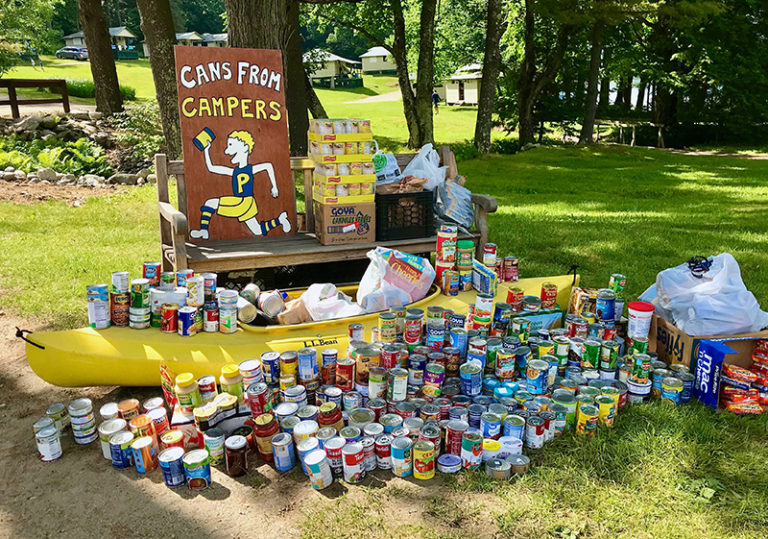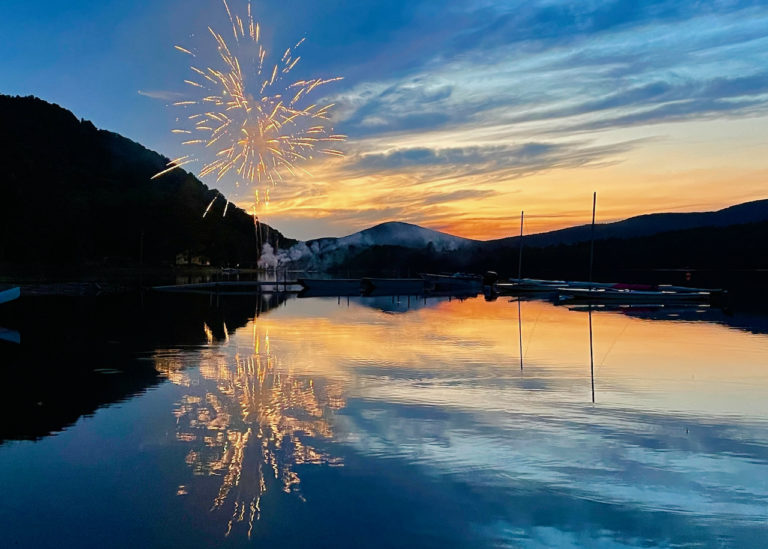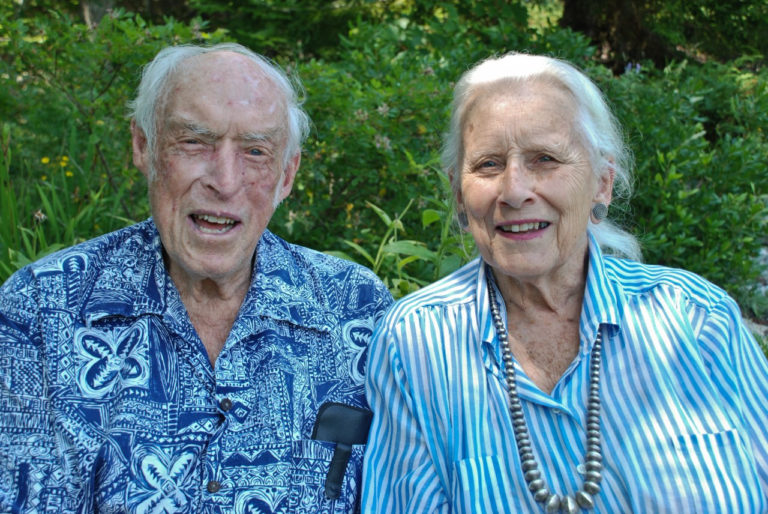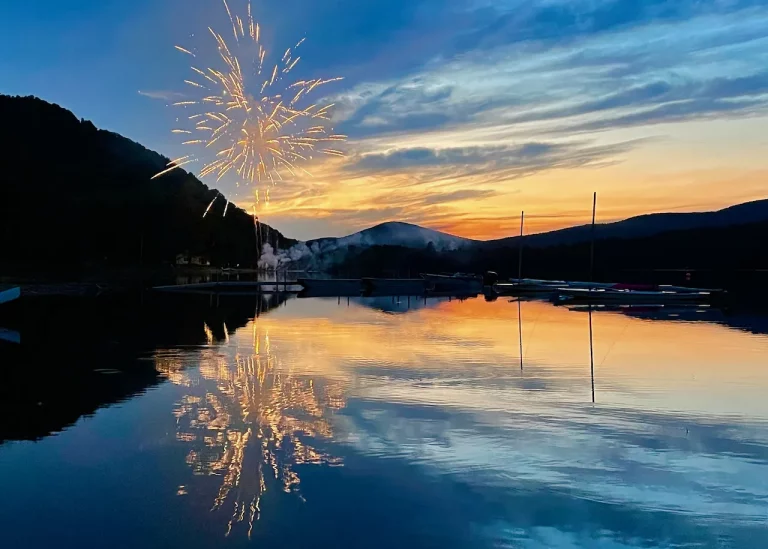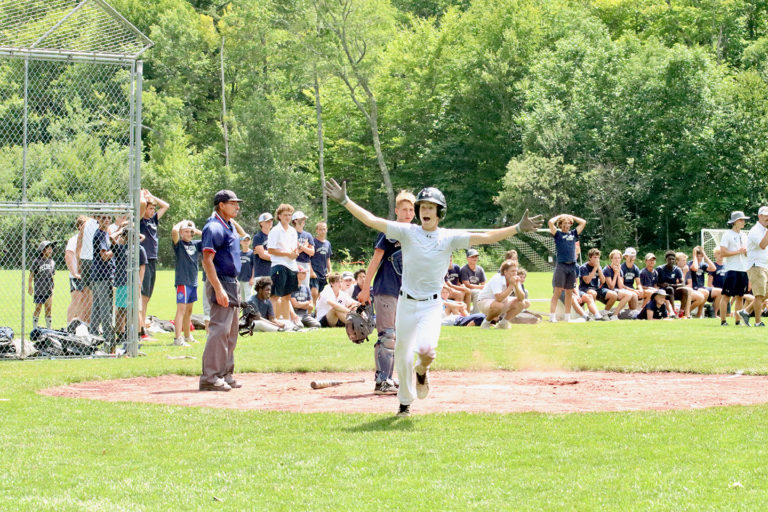- Camp Pemigewassett
- Newsletters 2022
- Pemi West
- Trips
2022 16s Trip
In many ways, the 2022 Pemi West trip could be described as a homecoming. Our first partnership with Deer Hill Expeditions in 2019 was a resounding success, and we planned to return the following summer. We had to cancel for obvious reasons. Health and travel concerns were still too great in 2021, so we took to the Maine woods for a special 16s program. This year, we finally lined up our return to the American southwest. Ten veteran campers – Ben Buie, Jon Ciglar, George Purdy, Julian Berk, Fernando Hokello, Jacob Raphael, Taran Doumboya-Danielou, Jacob Kunkel, Charlie Orben, and William Weber – signed up for this journey. The boys arrived at Pemi a couple days prior to our departure to take a course in wilderness first aid and enjoy being back in camp. Soon after, we packed our bags and flew from Boston, Massachusetts to Durango, Colorado.
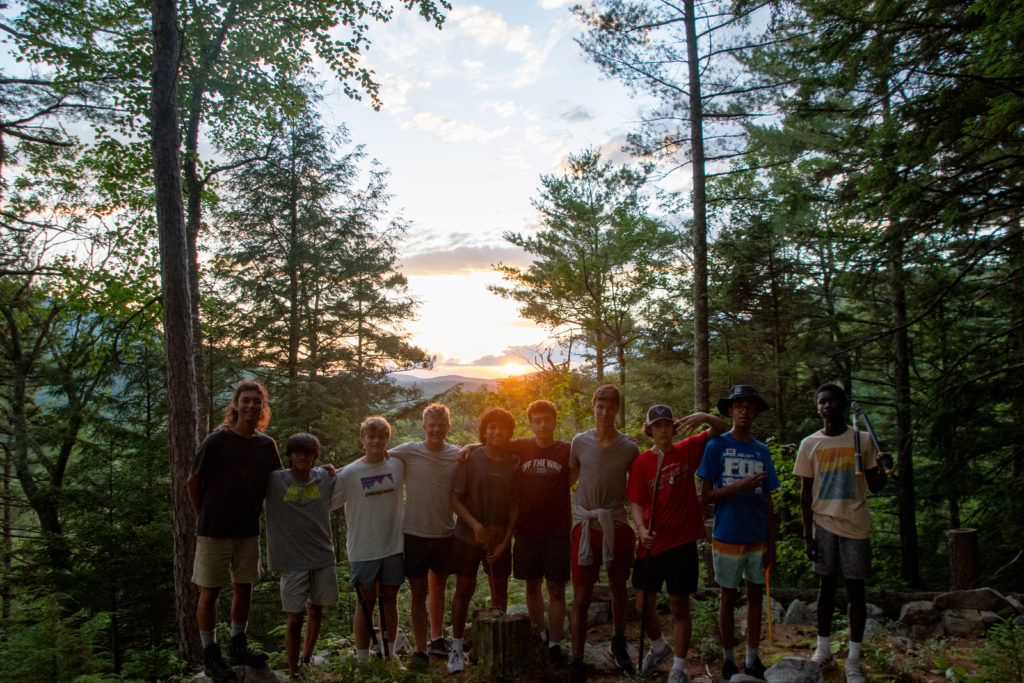
Joe Baptiste, the same program leader from Deer Hill who co-led with me in 2019 greeted us at the airport. He introduced himself, collected phones and wallets, and shepherded us to a truck and trailer where we secured our bags with tarps and ratchet straps. We made our way the hour or so to Deer Hill’s basecamp in the town of Mancos, rolling through hilly ranching country all the way. I was taken by the scenery as much as the first time I saw it, but this time there was a pang of nostalgia.
At basecamp we met the two remaining guides, Greg Cooper and Adam Scott, and prepared for our three-part journey. After another round of introductions, the leaders took turns reviewing the itinerary, establishing expedition behavior, teaching how to pack our bags, doing a swim test, loading the vehicles, and making a social contract that Deer Hill calls a “total value agreement.” The boys also began practicing circle, a routine in which everyone responds individually to a thought-provoking prompt. This ritual took place at the end of nearly every day through the course of the program, and brought us all closer as a result.

After we got a couple good nights of sleep and some home cooked meals, we packed our rigs and started driving through the Utah desert toward the upper segment of the San Juan River. The air at Sand Island boat launch was impressively hot. As soon as we had lined up our gear by the water, we donned life jackets and threw ourselves in the water to cool off. The silty river was the color of milk chocolate and would remain our best relief from the sun on the river. Before taking off, we visited a steep rock face with designs called petroglyphs etched into the surface, the ages of which were estimated to be between hundreds and thousands of years old. This would be the first of many signs of human activity to indicate the deep relationship between humans and this remarkable landscape.

Returning to the rafts, we reviewed safety and communication on the river and then pushed off. The river was low, but still ran far swifter than the Allagash or Connecticut. The horizon was dominated by ruddy orange rock carved smooth by erosion, but the shores were home to thick cottonwood trees and teemed with grasses. Ranch cows with plastic ear tags grazed on both sides of us, and prompted mooing from the boys.
We doused ourselves as often as we could to manage the heat. Three main rowers piloted the large oar boats carrying our gear, and most of the group assisted with canoe paddles. We took turns poking around in two inflatable tandem kayaks, affectionately called “duckies.” Periodically, a raft would catch on a bed of rocks in shallow water, and the group would wait as the captain called out orders to free up the boat. After a bit of struggle, the boat would lurch forward and return to drifting pleasantly. Before long, we landed at our first camp. Our first day on the river gave a fair sample of how the remaining days would transpire.
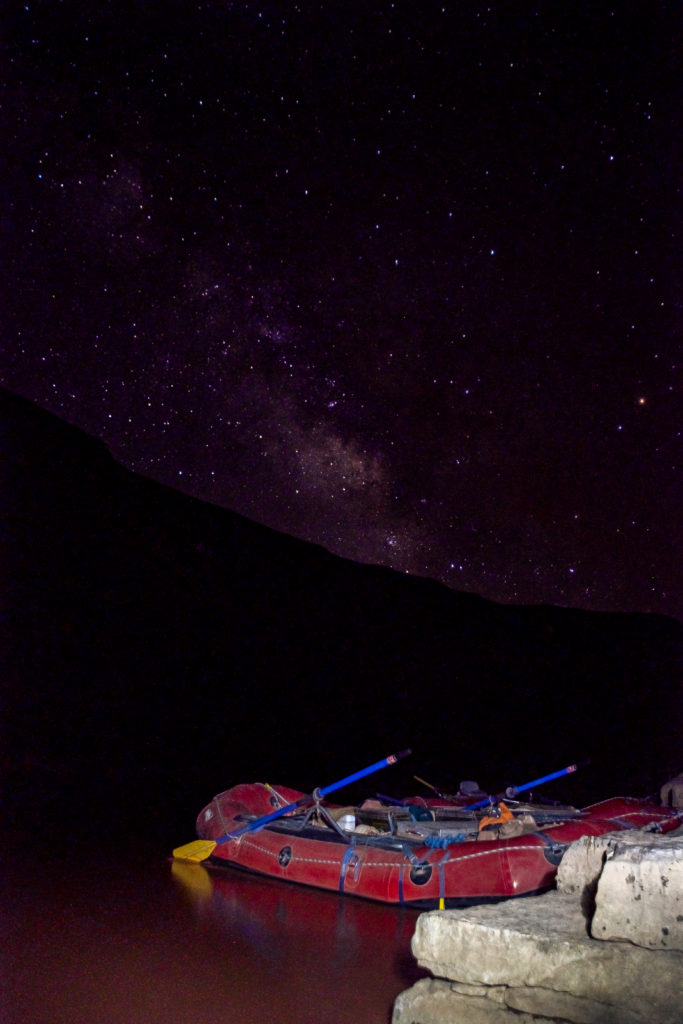
We set up camp and split the boys into work groups. They were all responsible for setting up stations or taking care of equipment. Two boys acted as leaders, helping the other groups as they assembled a kitchen and cooked meals, prepared a bathroom area, and cleaned and secured the oar boats. Groups rotated throughout, and became more efficient with time.
We camped on a sandy plain that would be flooded with snowmelt each spring. The cottonwoods there generously provided shade for our layover the following day. Instead of rafting, we visited an archaeological settlement, taught lessons in leadership styles and ecology, and played games. In the evening, we hiked to a prominent ridge to have circle with a view. Lime Ridge is a massive geological feature that can be seen from orbit, and it didn’t disappoint. We hiked back to camp by headlight, and spotted a couple scorpions as we retraced our steps.
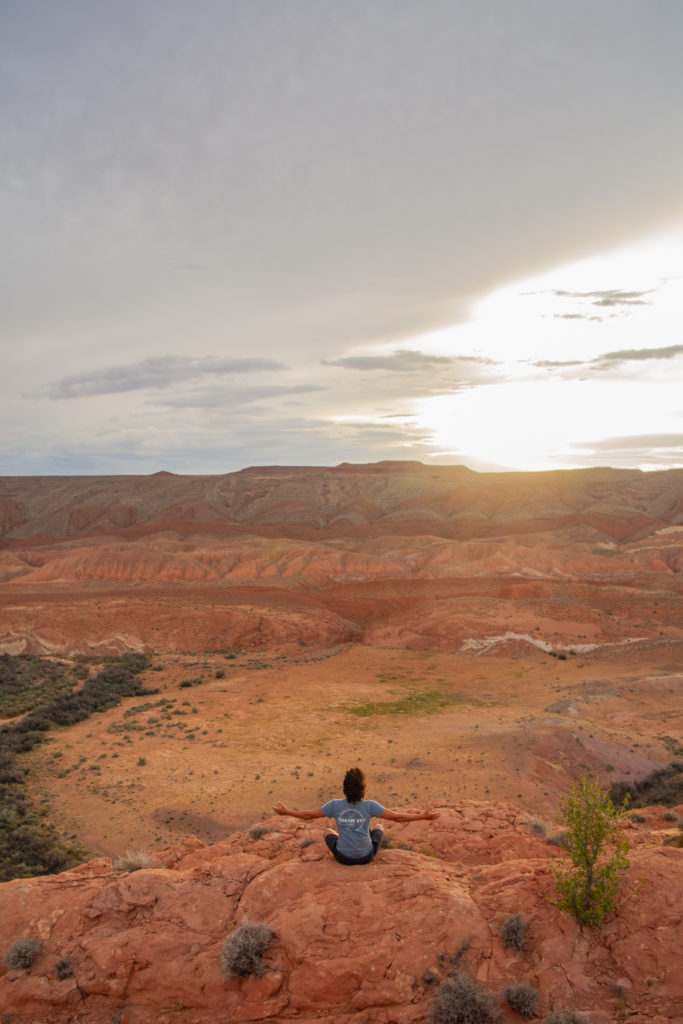
Canyons were soon upon us, and framed the sky for the next few days. We paddled around gooseneck bends and down rapids, and fell into a rhythm as we traveled and camped along the river. Drinking water and staying cool were our chief concerns. The boys made the best of their time there, competing to make the best meals and sharing their thoughts at circle each night. The final campsite left us eager to escape the heat, but awestruck by an ecosystem that harbored a staggering amount of beauty and life.
Once we reached the takeout, we packed up all our gear and waited for two Deer Hill interns to bring our bags for the service portion. This location was where the 2019 Pemi West trip had begun, the memory of which made me and Joe smile. The trusty interns arrived not too long after, and we ate lunch and changed out our gear. Once the transfer was done, we bought cold drinks at a gas station and drove toward the Navajo Nation.
A few hours later, we arrived at the Clark homestead in the Navajo Nation. The reservation is a sovereign nation that occupies land in Arizona, New Mexico, and Utah, and has its own government. An imminent Navajo presidential election was marked by numerous campaign signs along the road. Gwen and Dr. Ferlin Clark welcomed us as we drove up to the doorstep. Gwen had hosted us in 2019, and was kind enough to invite us back this summer. Gwen and Ferlin’s son, Damon, and his bride-to-be, Nia, joined us soon after. The Clarks introduced themselves, talked about how the week would go, and got us right into chores.
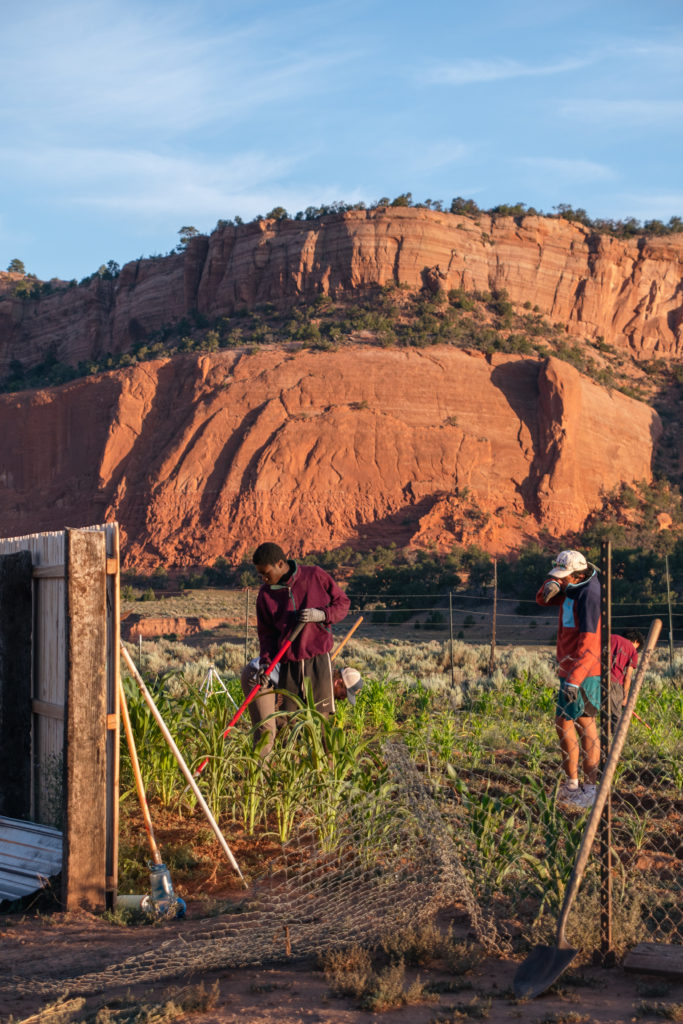
Over the next few days, we worked in groups to pull weeds from the corn field and help build an addition on the house. The boys learned to take measurements and use hand tools for building, and a couple of our young men took to it quite well. When the sun got too hot around noon, we stopped for lunch and conversation. Ferlin sat with us and shared his reflection on everything from manhood to cultural identity, pausing regularly to ask for our thoughts. On one afternoon break, we went to a Navajo flea market that had Navajo fry-bread and jewelry. As the days flew by, the boys engaged with what service and exchange meant to them. Not one of them left without understanding how fortunate we were to be invited there.
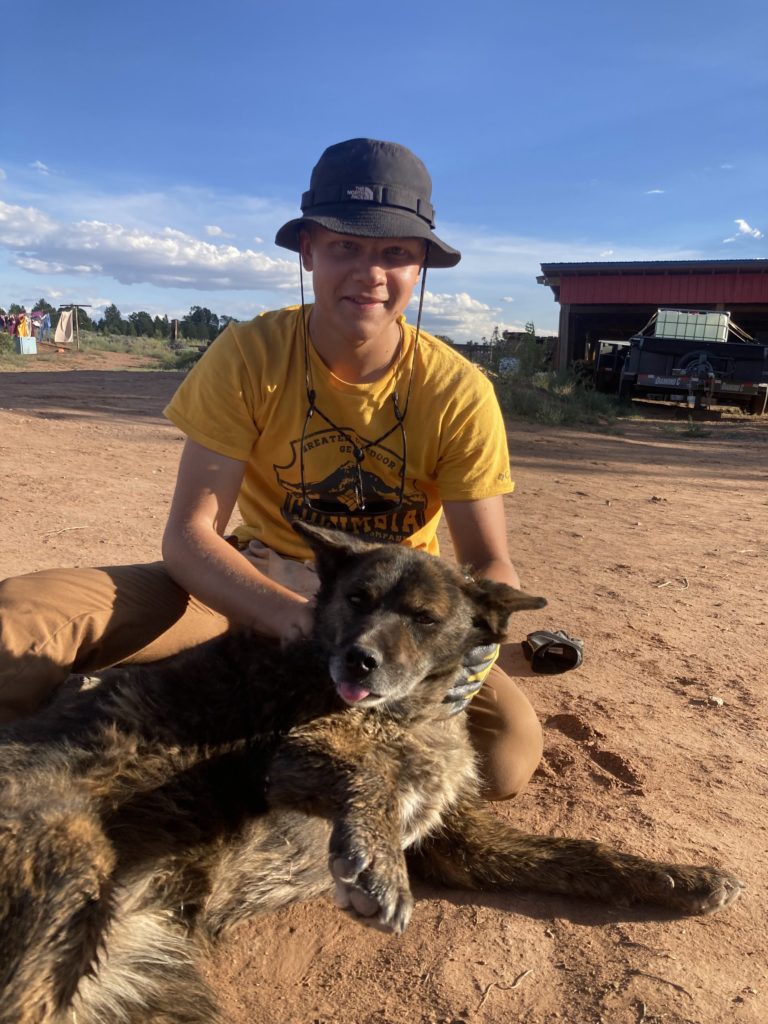
On the final day, we helped the family prepare a ceremony to remember Ferlin’s recently-deceased father. We drove to the home of Ferlin’s mother, who oversaw as we helped assemble a teepee. Family both young and old arrived to hold the ceremony together. Ferlin led a solemn prayer with his mother, and then we lifted long wooden poles and bound them with rope to form a large conical structure. A canvas shell was carefully wrapped around it and secured by Damon, who had received the teepee as a wedding gift. Once the main labor was done, we had breakfast with the extended family. As we sat, we talked about where we all came from and what service meant to us. Thanks were extended in both directions, and we parted ways before the ceremony began. The family would sing and pray through the night.
Gwen called to warn us that there had been a downpour at their homestead while we worked, and that we had better leave our vehicles at the paved road. We drove back, took only what we needed, and walked back to the homestead to sleep. After waiting for the mud to dry enough to drive on, we drove the vehicles back for our gear and returned to basecamp to prepare for backpacking.
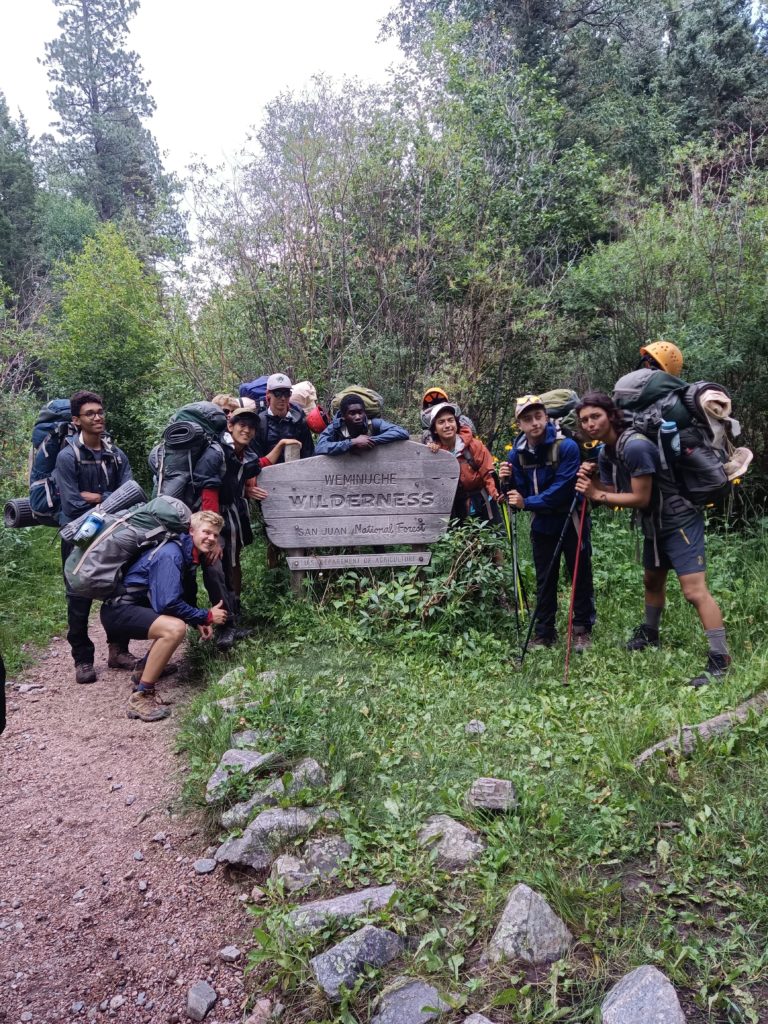
After cleaning and putting away all the gear, we took our first hot showers in almost two weeks. Feeling renewed, we were ready to take on the final leg of the journey. We drove a couple hours to a trailhead at the edge of the Weminuche Wilderness, and had a conversation with forest rangers who assessed how prepared we were. The first day of hiking was along a relatively even grade, and we leaders took our time teaching how to set up camp. Heavy rain arrived as we made dinner, and we rushed to eat and clean up before going to bed. Little did we know that we would face a week of unseasonably wet weather.
We climbed steadily the next day and camped next to Little Emerald Lake. Wildflowers made themselves known at the feet of stately ponderosa pines, helping us along in the rain. As we reached higher elevations, we started seeing pika and marmots among rock piles and trout surfacing in the water. We had enough of a pause in the rain to set up tarps and keep our gear dry during the next wave.
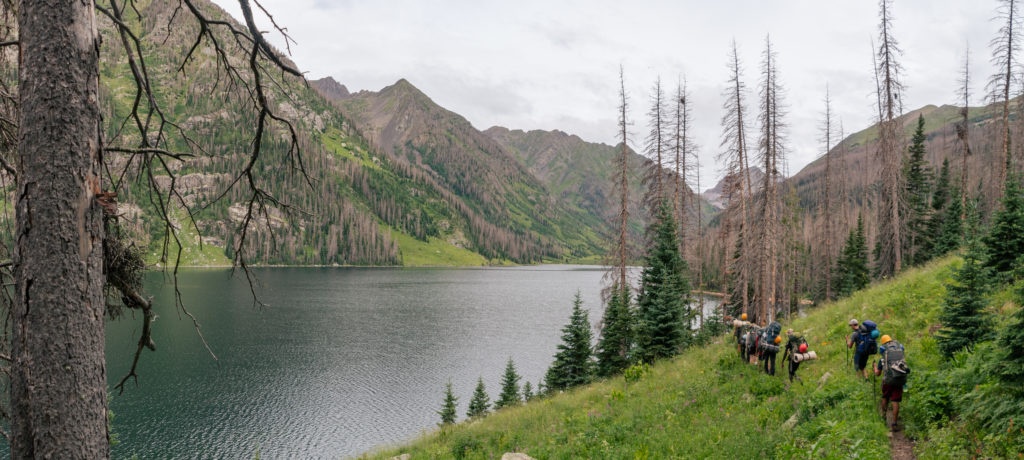
The next day we climbed even higher and the conditions became rougher. We had good weather to follow the shore of the larger Emerald Lake, and we took portraits of everyone. Then we started a steep climb. The rain came back and turned into hail. Cries of joyful surprise and stinging pain rose from the group. As we entered the camp at Half Moon Lake, we started to practice serious warmth management. Tarps were up quickly, and the orders were for everyone to boil water for warm drinks and food. A curious mule deer watched as we eyed the clouds above. The rain only let up for about an hour in the evening, giving us enough time to do circle and get back into sleeping bags.

With the harrowing conditions, we decided to scrap our plans for a summit attempt of Mount Oso, opting instead to go up and over another pass above 12,000 feet. The air was raw and the views of the surrounding jagged peaks were amazing. We went down the other side of the pass and started to feel the threat of the cold. A tarp went up in between some scrubby trees, and we ate as much as we could allow. Assessing the conditions and state of the group, the leaders all agreed to change the route. We confirmed with basecamp via satellite phone and descended through the valley with bellies full of food. Our camp that night was a lovely meadow at the intersection of two trails.
On the following morning, we had a layover day and dried out all our clothes. We were glad to have turned this way since it proved to be safer and no less beautiful. All day we told stories, held rounds of circle, ate food, warmed socks over a fire, and prepared for the next leg of the trail. The rain came back that night, but we were warm and happy. The next day was clear, and time flew by. We allowed the boys to spread out and hike in smaller groups or alone, convening at a gravelly campsite by a bridge spanning a surging river. Circle held special meaning that night, as it was our last in the wilderness.
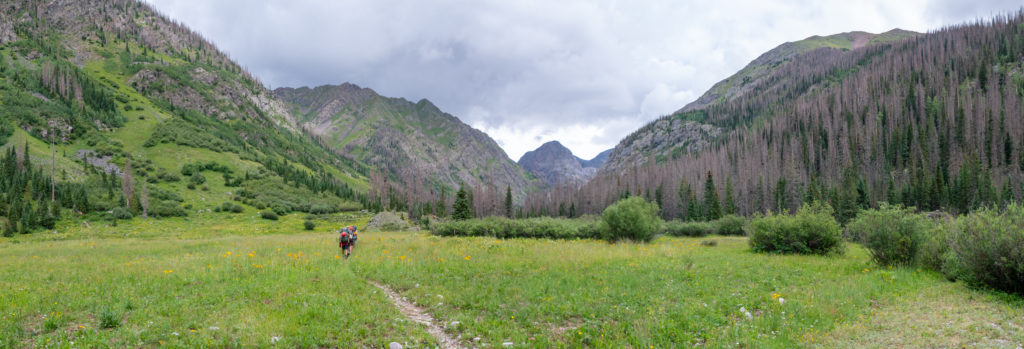
The final day was warm and defiantly sunny. We could have taken it as an insult from the Weminuche, but it certainly felt like a reward after pushing through adverse conditions. The interns picked us up one last time, and we returned to base camp full of gratitude. Back in Mancos, we decommissioned our gear and took showers. The next day, we had a sauna with four rounds of circle to bring the adventure to a close. Going through the heat together was both challenging and uplifting, and was safely managed with water breaks. Finally done with the expedition, we all celebrated with a barbeque set up by the wonderful interns. We went to bed that night with much accomplished, and much to be proud of. The next morning, the Deer Hill guides drove us to the airport and bid us farewell.
Many thanks to Pat Clare and to the folks at Deer Hill for coordinating this trip. Thanks to the Clarks for welcoming us to your home again and allowing us to share in your traditions. Thanks to Joe Baptise, Greg Cooper, and Adam Scott for sharing this opportunity and responsibility with me. A huge thanks also to Charlie Orben, who took most of the photos accompanying this article. Most especially, thank you to the boys who came on this journey; I’m proud of every one of you for learning and living together this summer.
I wish everyone good luck, long life, and joy!
– Nick Davini





